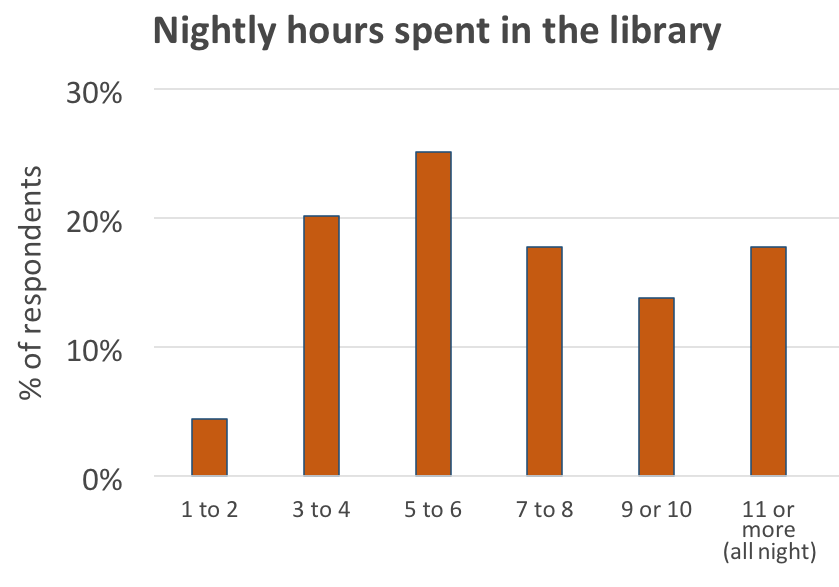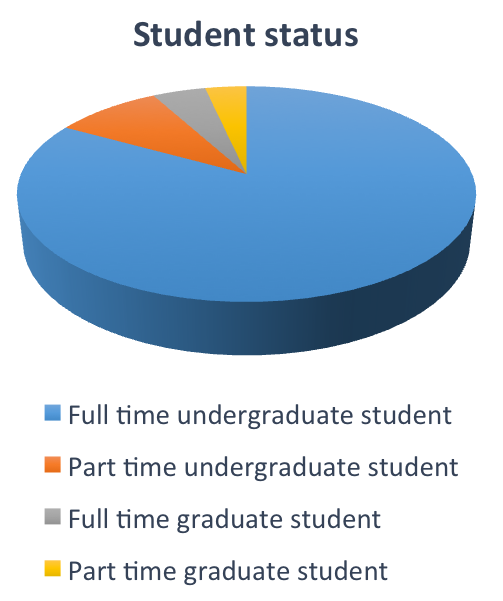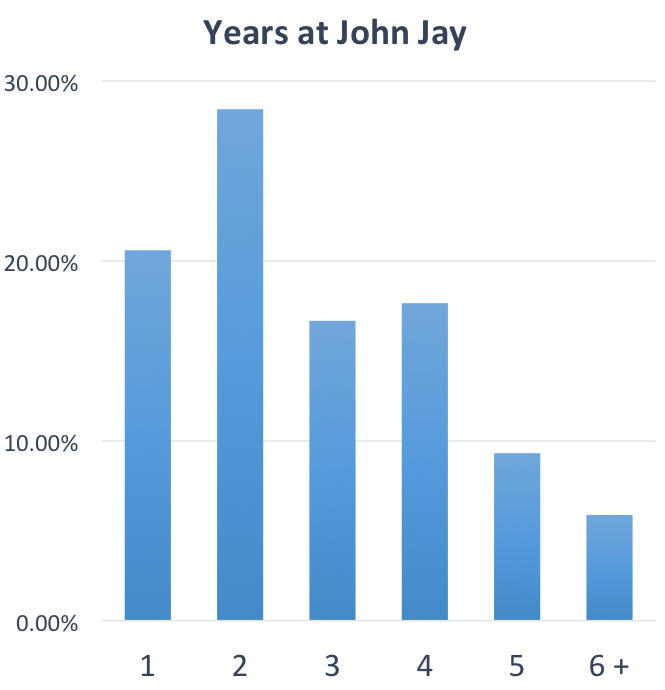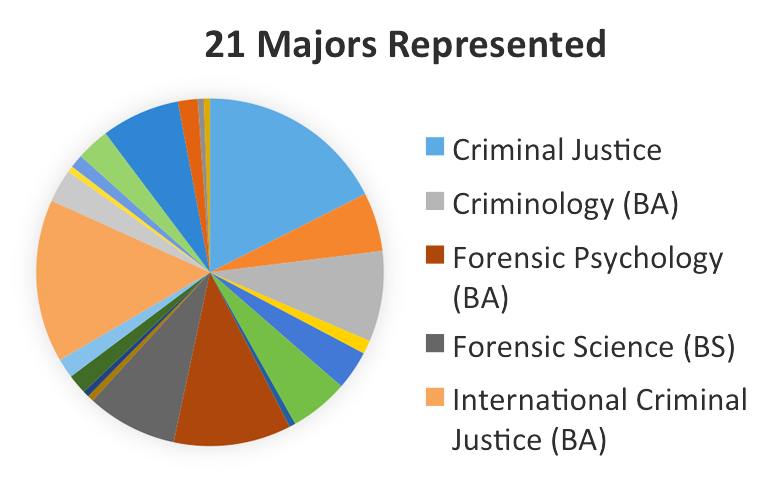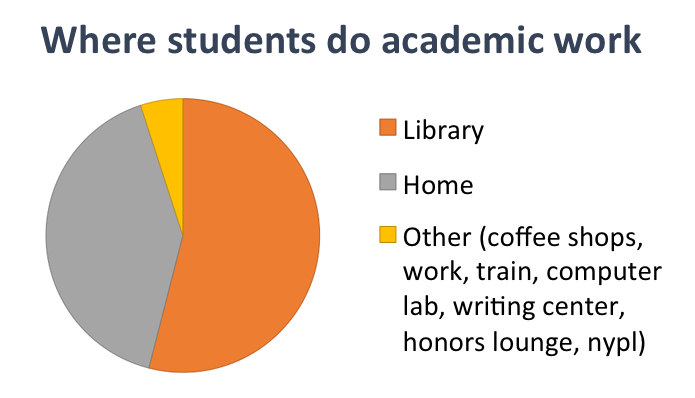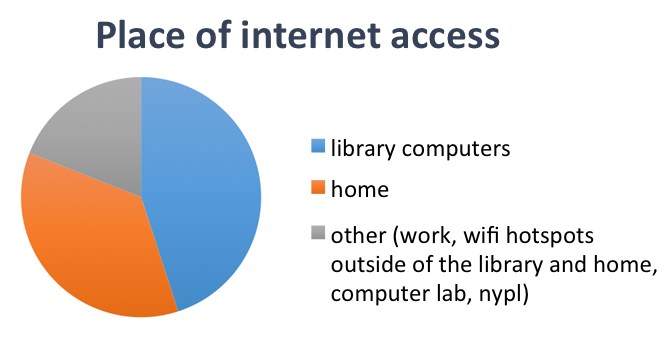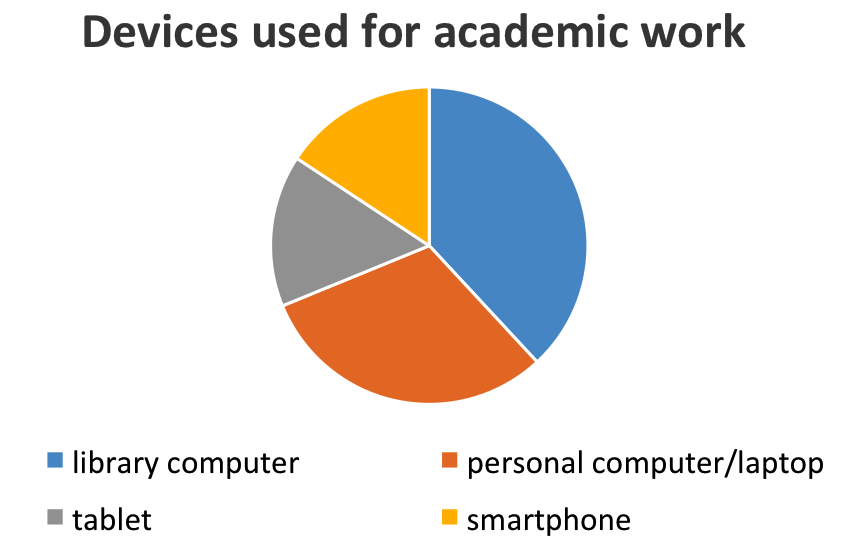In the last edition of the Library newsletter, we reported on how many students were taking advantage of the 24/7 Library lab hours during the final examination period (see “Library as space: Just being OPEN is still one of the best things the library has to offer,” Spring 2015). Despite the exponential increase in the amount of library content that is accessible electronically from anywhere one can access the Internet, a significant number of John Jay students continue to use the physical library both during regular hours, and as we learned, during extended hours.
Although the numbers alone were significant, we wanted to know more about these dedicated students. Were they writing research papers or studying for final exams? What resources were they accessing? Could a correlation between these after-hour library users and academic success, retention rates and other strategic goals be made? In the Spring of 2015 we tried to find the answers to some of these questions by surveying the students using the library during these extended hours.
Total student hours. Before getting into some of the specifics, the first thing to note is that more students took advantage of these extended hours each successive semester they were made available. As shown in the chart below, in the inaugural semester, Spring 2014, a total of at least 3,342 student hours (the total number of students in the Library lab during each hour of the extended hours) were logged, then in Fall 2014 that number increased to 4,655 (39% increase), and in the Spring 2015 the number increased again to 5,639 hours (21% increase).
Peak day of usage. Extended Library lab hours were offered the week before and the week of final exams. In Spring 2014 the peak day of use was the Sunday night before exam week began and, except for a slight increase on Tuesday and Wednesday of exam week, the numbers continued to decline from this Sunday peak. In the Fall 2014 period, the peak day of use was again the Sunday evening before exam week but usage peaked almost as high on Thursday of exam week, with higher comparative use throughout the intervening period. This same pattern continued in Spring 2015 but with higher overall usage and with the second highest day of usage occurring on the Tuesday evening of exam week. Not only were more students taking advantage of these extended hours but they were doing so more regularly.
Peak hour of usage. In all semesters the largest number of students could be found in the Library between 10 p.m. and 11 p.m. These numbers declined throughout the evening and began to rise again between 7 a.m. and 8 a.m. as students returned to the Library. It appears that students arrived (or remained in the Library lab once the extended library hours began, typically at 10 p.m.) and then left at different hours during the night as they completed their work. This is supported by the survey data, summarized in the chart on the previous page, showing how long respondents had planned to spend in the Library on a given night. Only about 4% of the surveyed respondents planned to spend one or two hours in the Library lab on a particular evening while about 45% were planning to be there for three to six hours and the largest percentage, about 50%, planned on staying seven or more hours, essentially making a night of it.
Who were these students? A typical user of the extended Library lab hours was a full-time undergraduate in her first or second year of college and of traditional college age. Perhaps she was looking for a college experience (an all-nighter of studying with or without friends) or in need of a place with a computer and Internet access to complete her work for the semester, or some combination of the above.
Our data showed that the overwhelming majority (80%) of surveyed respondents were full-time undergraduate students and lived with their parents (64%). The next largest group were part-time undergraduates (9%), with both full and part-time graduate students participating at the lowest rate (4% and 3%, respectively). The majority of respondents (82%) had been at John Jay for four years or less. Most were in their second year (28%) followed by first year students (20%).
Consistent with the above data, most students were 22 years of age or younger with the percentages spread fairly evenly across the age of 22 (12%), 21 (13%), 20 (11%) and 19 (10%). About 11% of the visitors were between 30 and 62 years of age, suggesting that having 24/7 access to the Library also serves the needs of non-traditional students.
Looking at these users from a major or area of concentration perspective, a healthy mix of 22 different majors were represented. The top five were Criminal Justice majors (15%), followed by International Criminal Justice (13%), Forensic Psychology (10%), Forensic Science (7%) and Criminology (7%).
Why were they there? Students reported they were using the Library during these extended hours for a variety of reasons but the top reason was to write a research paper, followed by individual study or research using the computers. Because the entire Library was not open, only the Library lab which provides about 50 computers and a cordoned off section of the Niederhoffer Lounge, it is not a surprise that many students were using the Library computers to write research papers. Given the number of students who reported they were at the Library to study, this suggests that if more study space were made available (in addition to the Niederhoffer Lounge), even more students would take advantage of these extended library hours.
Were they looking for computers, Internet access, and/or space? To better measure the importance of the Library in providing access to study space and computers for writing and research, we asked respondents where they typically do their research and writing. Most respondents reported some combination of the Library and home, with the Library identified as the place used most often. A small percentage reported that they did their research and writing at other places including WiFi hotspots in coffee shops or their workplace.
To understand the importance of providing students with the hardware they need to do their work, respondents were asked where and on what device they typically access the Internet for academic work. A similar pattern emerged. As shown in the chart on the previous page, most accessed the Internet from Library computers, followed by personal computers/laptops in their homes and then various WiFi hotspots. Library computers and then personal computers/laptops were the devices most often used for academic work. Tablets and smartphones tied for the third most used device but when added together were as much used for academic work as were Library or personal computers.
Who benefited? Happily, the students who reaped the benefits of these extended Library hours were not just the usual suspects. The largest number reported having a 3.0 GPA, but these extended lab hours served the full spectrum of academic performers demonstrating how the Library supports the success of all our students.
We asked the students how we could improve this program if extended Library lab hours were offered in the future. In addition to multiple requests to allow food and coffee in the Library and to open more of the Library space – and perhaps a comfortable place to rest – the most frequent sentiment was captured by one student who said, “It is an amazing opportunity; just keep it going as it is.”
Maureen Richards

